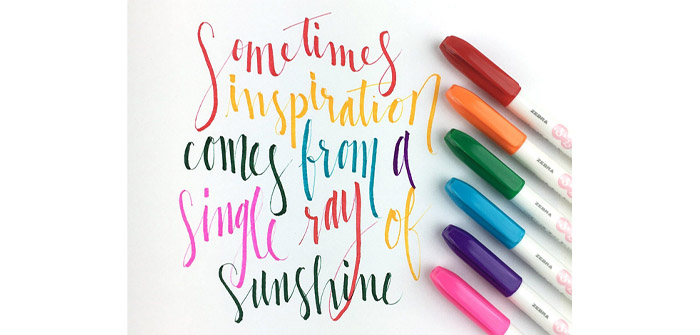4 Things to Know Before Learning Calligraphy
Calligraphy is a classic way of handwriting that has turned into a modern art form as well as a growing trend in the creative world. The purpose of calligraphy is to create beautiful and decorative words that can be used on anything from letters, cards, or handwritten signs. While it may seem like a simple thing to learn or something that you can just jump into, the process of learning calligraphy takes time and effort to practice and perfect. If you are thinking of beginning a journey into hand lettering, here are a few tips that you should know before starting.
- Back to Basics
When beginning calligraphy, the first priority is to learn the basics, including how each letter is formed before even putting ink to paper. Many people first starting out often confuse cursive and calligraphy and think the letters are created the same way, but that is a misconception. Calligraphy is its own style of handwriting that focuses on up and down strokes, while cursive focuses on connecting all the letters. Each letter in calligraphy is created using upstrokes and down strokes, where the upstrokes use thinner lines and the downstrokes use thick, bold lines. Knowing how to create each individual stroke will make it easier when you move on to letters and then words.
- Get the Right Tools
There are plenty of calligraphy pens out there but not all are suitable for beginners. Instead of using a nib and liquid ink, it is better for beginners to use a brush pen. Brush pens have a pointed tip similar to a paintbrush, allowing beginners to have more control over line movements. The finer the tip of a brush pen, the more control it offers. The Funwari Brush Pen has an ultra-fine point tip and comes in 6 bright and vibrant colors, making it the perfect tool for a novice. For a more classic brush pen, try the Zensations Brush Pen. It has black ink and comes in 3 sizes—super fine, fine, and medium—which allows you to learn the differences in tip sizes and practice a variety of stroke thicknesses. The Zensations Brush Pen is also available in a fourth version that’s double-ended, providing a fine and medium tip on either end.
- Practice, Practice, Practice
As the old saying goes, “practice makes perfect” and this is especially true for learning calligraphy. The best way to practice is to select a type of stroke and write it over again and again repeatedly until your lines are consistent and symmetrical. Do this with all the strokes until you are completely comfortable, and then move on to letters and eventually words. It can feel mundane and boring to perform these “drills,” but this practice is necessary for muscle memory
- Be Creative
Just like how everyone has a different handwriting style, each individual person can have their own calligraphy style. Once you have practiced and feel comfortable with free handing your calligraphy, you can begin to add your own style and flourishes. Use a tool that helps inspire you, like the Mildliner Brush Pens. They are available in 15 soft pastel shades to help let your imagination run free. For vibrant, metallic colors, check out our Zebra Metallic Brush Pens, available in 7 colors that pop on black paper. You can also find inspiration from other calligraphy artists on Instagram. Spending time watching these videos can help inspire your own creativity and give you great ideas of how to make your calligraphy your own.
Calligraphy is something that anyone can learn and make part of their skill set. Just remember that it is a craft that takes a lot of practice, but there are plenty of resources and tools that can help along the way.





